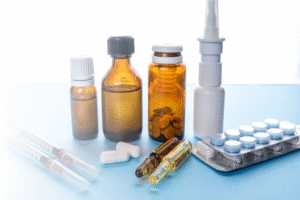7 Ways to Balance Cost and Sustainability in Pharma Packaging

For pharmaceutical companies, the pursuit of sustainable packaging cannot be a separate budget line item; it must be a core part of the cost-optimization strategy. The following seven steps offer a roadmap for procurement, R&D, and sustainability teams to deliver environmental gains while maximizing profitability.
1. Think Lightweighting, Not Just Material Swaps
The most sustainable package is often the one that uses the least material. Before replacing a traditional material with a greener but heavier alternative, focus on lightweighting. Using advanced films or thinner-gauge plastics that maintain barrier protection is a dual win: you reduce the material unit cost and cut down on distribution expenses. Lighter packages require less fuel for transport, reducing Scope 3 emissions and immediately impacting your logistics budget.
2. Standardize Your Packaging Portfolio
Unnecessary complexity is a major cost driver. An audit often reveals an excessive number of SKUs (Stock Keeping Units) and material specifications that add little value. By standardizing primary and secondary packaging formats across different product lines (where regulatory approval permits), you can:
- Maximize purchasing power through higher-volume material orders.
- Simplify the inventory management process, reducing warehousing costs.
- Streamline line changeovers, minimizing manufacturing downtime.
3. Design Out Excess Components
A fundamental principle of cost-effective sustainability is designing waste and complexity. Challenge every component in your package. Do you genuinely need that separate insert, the secondary cardboard tray, or the foil seal on a bottle cap? Every extra layer of material not only adds to the procurement cost but also increases the final Extended Producer Responsibility (EPR) fees and reduces the package’s recyclability in the eyes of the consumer and waste management facilities. Simpler designs are cheaper, cleaner, and easier to manufacture.
4. Leverage Post-Consumer Recycled (PCR) Content
Moving away from virgin resins is not just an environmental choice; it’s a financial hedge. As global regulations and plastic taxes become common, using Post-Consumer Recycled (PCR) content provides insulation against these penalties. While the price of PCR can fluctuate, strategic, long-term sourcing arrangements can make it competitive with virgin plastic, especially when factoring in the avoided fees and the positive brand association derived from clearly meeting recycled content goals.
5. Embrace the Strategic Investment Mindset
Stop viewing sustainable packaging as a sunk cost or an unavoidable expense. Instead, frame it as a strategic capital investment. This perspective shifts the focus from the immediate purchase price to the long-term returns. Companies investing in sustainable packaging benefit from:
- Improved ESG Ratings: Attracting major institutional investors who increasingly rely on environmental, social, and governance scores.
- Market Differentiation: Gaining a competitive edge, especially in procurement bids where sustainability criteria are weighted heavily.
- Future-Proofing: Complying with evolving regulations ahead of the curve, avoiding costly emergency overhauls.
6. Adopt Circularity to Maximize Asset Value
To truly maximize asset value and redefine profitability, companies must shift from the linear “take-make-dispose” model to a full Circular Economy approach. This principle focuses on keeping materials in use for as long as possible. For pharmaceutical packaging, this means investing in materials that are inherently reusable, highly recyclable, or compostable, ensuring the economic value of the raw material isn’t lost after one use. It involves designing systems that allow materials to be effectively recovered, processed, and cycled back into the manufacturing stream, creating a stable, lower-cost resource loop. This long-term value creation is key to sustainable investment.
7. Choose a Partner for Life-Cycle Assessment (LCA)
To prove that the sustainable choice is the most cost-effective one, you need verifiable data. A Life-Cycle Assessment (LCA) partner can help calculate the Total Cost of Ownership (TCO) for a package, not just its price tag. The TCO includes all hidden costs, such as disposal fees, future EPR obligations, and potential carbon taxes. The LCA often reveals that the package with the lowest initial price is, over the total life cycle, significantly more expensive than a well-designed, sustainable alternative.
The pharmaceutical industry’s commitment to patient health must now be inseparable from its commitment to planetary health. The tension between cost-effectiveness and sustainability is, in reality, a false dichotomy. As the hidden costs of non-sustainable packaging—from surging regulatory fees and plastic taxes to reputational risk—continue to rise, the immediate savings of conventional materials quickly evaporate.
The future belongs to the companies that recognize sustainable packaging as a strategic asset. By embracing the principles of lightweighting, standardization, and circularity, organizations can transform their packaging operations from a reactive cost center into a source of long-term value and competitive advantage. Ultimately, the most sustainable package is not just the best choice for the planet, but the only truly cost-effective choice for a financially resilient business.





